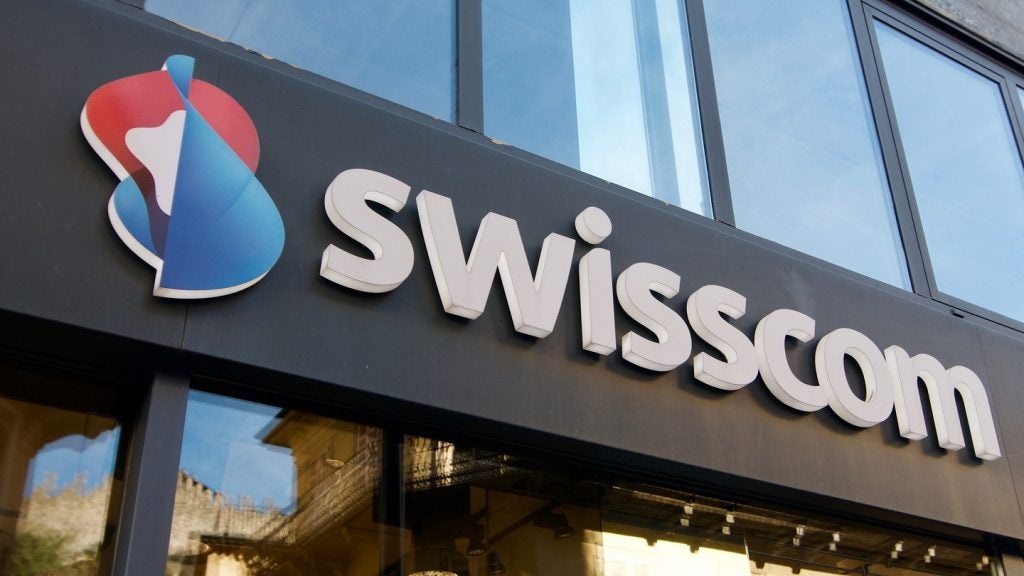An extensive study undertaken by Finaccord reveals
insurers and major retail companies in many countries are teaming
up to distribute a wide range of life, health and general insurance
products. Finaccord director Alan Leach provided LII with
insight into the study’s findings. Robin Arnfield
reports.
 Insurers are
Insurers are
continually seeking new hi-tech ways of distributing their
products. The internet and, more recently, the mobile phone are now
weapons of choice in distribution armories. But some insurers are
also adopting a more old-style approach, using the stores of major
retailers to reachms of potential customers.
The extent of the retail store
channel is the subject of a just-published study by UK-based
consultancy Finaccord. Global Retailer Insurance: Affinity
Schemes in Supermarkets and Other Stores reveals that major
retail brands distribute insurance in 35 of the 65 countries
researched. For the study, Finaccord surveyed 6,275 major retail
brands in the 65 countries and examined their involvement in
distribution of life, motor, household, accident, travel, pet and
dental and other types of health insurance.
Chile is the country where major
retailers play a prominent role, with Finaccord finding that 30.2%
of major retail brands sell at least one form of mainstream
insurance. Close on Chile’s heels are Peru, where 22.9% of major
retailers distribute insurance; followed by South Africa with
19.0%; Mexico with 14.7%; and Canada with 12.8%.
Between 5% and 10% of the major
brands investigated offer insurance in a further seven countries –
Brazil (5.2%), Colombia (5.3%), Germany (6.6%), Hungary (6.8%),
Japan (6.0%), Switzerland (5.5%), and the UK (8.4%).
How well do you really know your competitors?
Access the most comprehensive Company Profiles on the market, powered by GlobalData. Save hours of research. Gain competitive edge.

Thank you!
Your download email will arrive shortly
Not ready to buy yet? Download a free sample
We are confident about the unique quality of our Company Profiles. However, we want you to make the most beneficial decision for your business, so we offer a free sample that you can download by submitting the below form
By GlobalDataIn the US only 4.6% of major
retailers were found to be distributors of insurance with big-names
including the Kroger group and Wal-Mart’s Sam’s Club
subsidiary.
Kroger, whose subsidiaries include
Baker’s, City Market, and Dillons, sells life insurance products
from Garden State Life Insurance Company, a direct sales subsidiary
of American National Insurance Company. Sam’s Club offers life
insurance through a broker called Extend Insurance Services.
Brandassurance
“Brandassurance, the involvement of
retailer brands in selling insurance, is a growing trend in
financial services,” Finaccord director Alan Leach told
LII.
“Life insurance products sold by
retail brands are usually relatively simple protection products
such as term life assurance, perhaps offered alongside similarly
straightforward accident and health insurance products. In total,
our research traced 153 major retail brands selling life
insurance.”
Typically, retailers do not sell
life insurance through agents sitting at a desk in their stores,
Leach explained.
“They will display brochures at the
point-of-sale, and also carry out targeted mailings or telephone
sales campaigns,” he added.
Leach continued that, where
retailers offer a store credit card programme, they are
well-positioned in terms of knowledge of their customers’ spending
habits as well as their contact details to sell insurance products
through direct mail.
Without details such as the
customer’s telephone number and postal or email addresses, it is
very difficult for a retailer to launch a direct-sales insurance
operation, he said.
“Most retailers offering store
cards or point-of-sale consumer finance programmes have related
schemes to sell creditor/payment protection insurance,” Leach
said.
“Our report only looks at
stand-alone insurance, where the relationship is directly between a
retailer and an insurer. With creditor/payment protection
insurance, the relationship is between the card issuer/consumer
finance firm and the insurance provider.
“Motor insurance and household
insurance are the two forms of stand-alone insurance most commonly
sold through retailers, followed by life insurance.”
Motivation
“The successful precedent of
retailer-sold insurance in markets such as Chile and the UK is
encouraging major retail brands in other countries to challenge the
traditional insurance distribution systems with their own
brandassurance propositions,” Leach stressed.
A major incentive for retailers to
sell general and life insurance products is in particular the fact
that insurance markets are registering organic growth in excess of
retailing markets.
“This is because retailing is a
mature industry and, in developing countries in particular, life
insurance premiums per capita are low,” Leach explained.
In Latin American countries such as
Chile or Mexico, retailers already play a major role in providing
banking services to the unbanked, while conventional insurance
firms have limited distribution reach.
“This makes it a natural fit for
retailers in Latin America to also offer insurance products,” Leigh
said.
Santiago-based retail group
Falabella is a major distributor of insurance in Latin America
through its subsidiaries in Argentina, Chile, Colombia and Peru.
Falabella, like its Chilean retail rivals Ripley and Cencosud, also
provides banking services in addition to selling insurance. Indeed,
Finaccord stressed that the significant involvement of large
Chilean retailers in the country’s insurance market is in part a
consequence of their even higher profile in the banking sector.
“Falabella reported a portfolio of
over 8m policies in force across its international insurance
operations at the end of 2008, of which approximately three
quarters were attributable to Chile itself,” Leigh said. “Its
revenues from insurance activities amounted to $273m during
2008.”
Falabella does not break its
insurance sales down into specific segments such as life, Leigh
noted.
The UK
 UK supermarket chain
UK supermarket chain
Sainsbury’s has sold term assurance since 2004 in a partnership
with insurer Legal & General.
“Sainsbury’s provides life
insurance to those who wish to buy direct,” a company spokesperson
told LII.
“We offer benefits such as
Lifestage options, which guarantees that policyholders can increase
their cover when moving home, getting married, and upon the birth
of their first child.”
Since 2007, Asda, the UK
supermarket subsidiary of Wal-Mart, has offered life insurance
through a partnership with UK telephone-based insurance broker
LifeSearch. Asda had previously offered life insurance from
Scottish Widows. In January 2009, Asda partnered with mutual
insurer LV= to offer life insurance to the over-50s in-store, over
the phone and on the internet.
In December 2009, Tesco Bank, the
financial services arm of the UK’s largest supermarket group,
launched a range of life insurance products including level or
decreasing cover, critical illness cover, and over-50s cover in
partnership with Friends Provident (see LII 243). Tesco
previously sold life insurance from DirectLine, the insurance arm
of Royal Bank of Scotland (RBS).
In July 2009, Tesco bought out
RBS’s 50% share in the supermarket chain’s UK financial services
arm, and has been busy unraveling its various business
relationships with RBS, Leach said.
“I would estimate that Tesco is a
small player in the UK life insurance market,” Leach added.
The US
 US retailers have proved
US retailers have proved
reluctant to distribute life insurance, even though there is no
regulatory barrier provided that they partner with licensed
insurance agents.
“The rules state that a life
insurance sale in the US has to be fulfilled by a licensed
insurance agent,” said Craig Weber, senior vice-president of US
consultancy Celent’s Insurance Group.
“But this agent could be sitting in
a call centre responding to a call from someone who picked up a
brochure at WalMart, or they could be sitting at a desk in a
supermarket.”
“People do not go to a Costco
supermarket to buy a pint of milk and some life insurance, but they
do associate WalMart or Costco with discounted, low-cost products,”
added Weber.
“So there is a natural affinity
between a commoditised product such as term assurance that can be
easily sold to consumers and discount retailers. Term life is easy
to explain and does not require a lot of hand-holding on the part
of the sales agent.”
The low penetration of retailer
sales of life insurance in the US relative to European countries
reflects US consumers’ conservative approach.
“In the US, buying life insurance
is still seen as something you purchase at the kitchen table from a
sales agent,” Weber said. “Europeans are much more willing to use
alternative distribution channels such as retailers for life
insurance. Also, in Europe, life insurance is more commoditised
than it is in the US, which makes it easier for UK supermarket
chains such as Tesco to sell life insurance.”
“There is a large category of
lower-income people who are not being targeted by life insurers in
the US,” said Steven Leigh, principal analyst at US consultancy
Gartner.
“US life insurers tend to focus on
consumers with significant money to invest, leaving a gap in the
market that could be exploited by discount retailers.”
Department stores in the
lead
Although distribution is undertaken
by a wide spectrum retailers, Finaccord found department stores
were the most active with a penetration rate of 14%. They were
followed by cash and carry outlets at 10.8% and supermarkets at
8.2%.
Finaccord noted that each of these
types of retailer benefits from regular visits from customers, as
well as a growing volume of online sales, both of which are
favourable for the development of retailer insurance.
Finaccord added that, while much of
the business of home shopping specialists is transferring from
printed catalogues to the internet which can be beneficial for the
marketing of insurance considered in its survey, only 2.3% of the
retailers in this category were offering mainstream insurance
policies.
There would also appear to be an
appetite for increased innovation in market alliances between
retailers and insurers. In the Philippines, mobile
telecommunications company Globe Telecom recently teamed up with
United Coconut Planters Life Assurance Corporation (Cocolife) and
MedAsia Healthcare System Philippines to provide free accident
insurance and discounted health insurance-.
The rewards programme is designed to encourage retailers such as
convenience stores, market stalls, beauty parlours, and bakeries,
to sell Globe Telecom mobile phone airtime credits. To qualify,
retailers have to sell a minimum of PHP5,000 ($107) worth of
airtime credits to customers in a three-month period. Cocolife is
providing free personal accident insurance coverage worth
PHP25,000, while MedAsia is offering discounts on health care plans
and on fees for consulting doctors.







